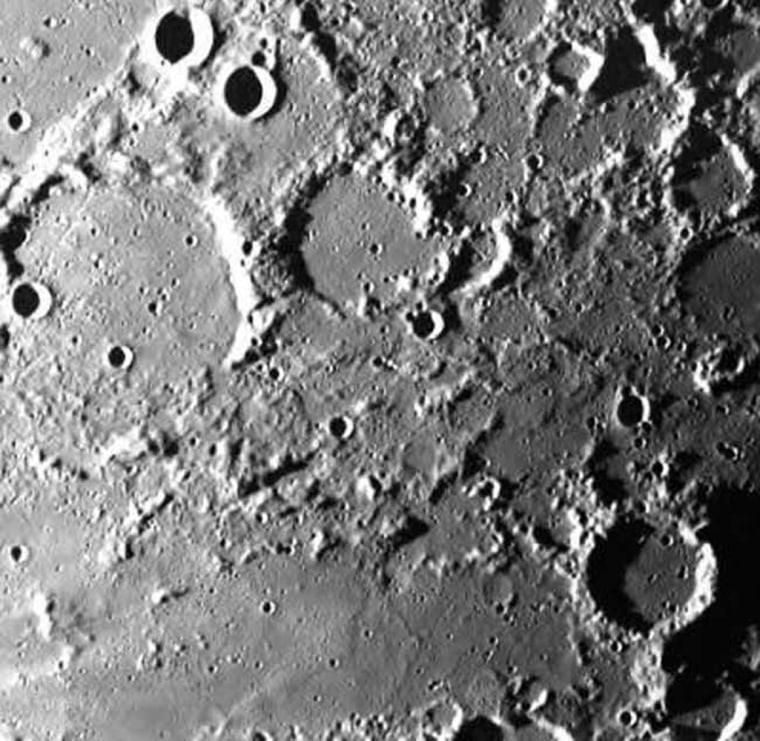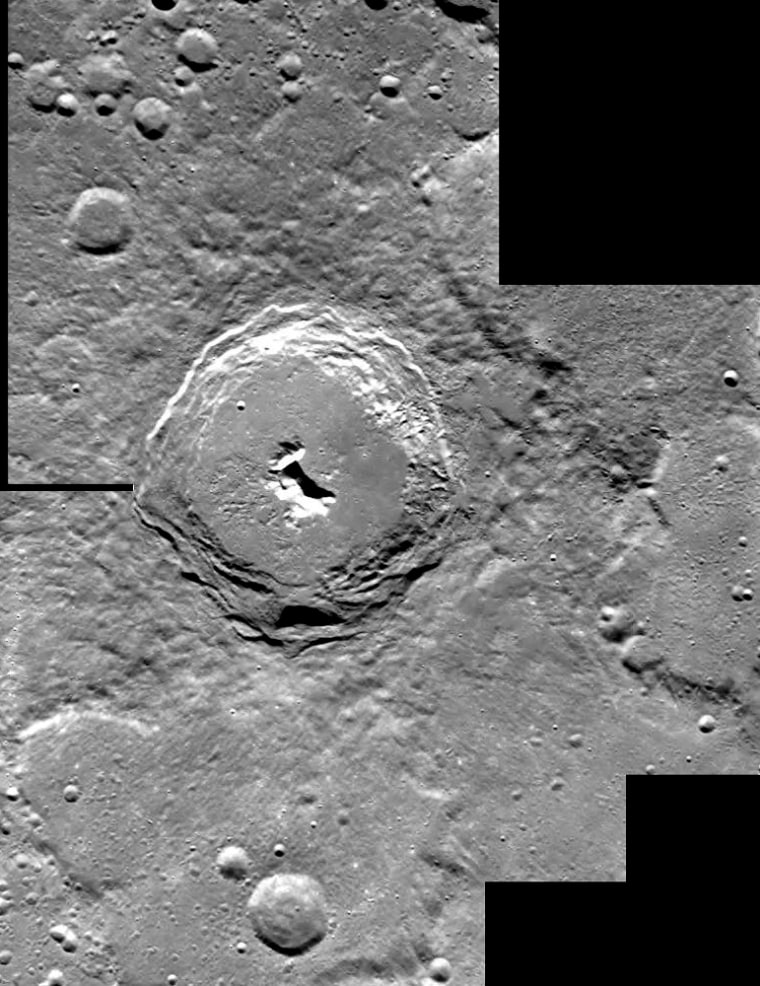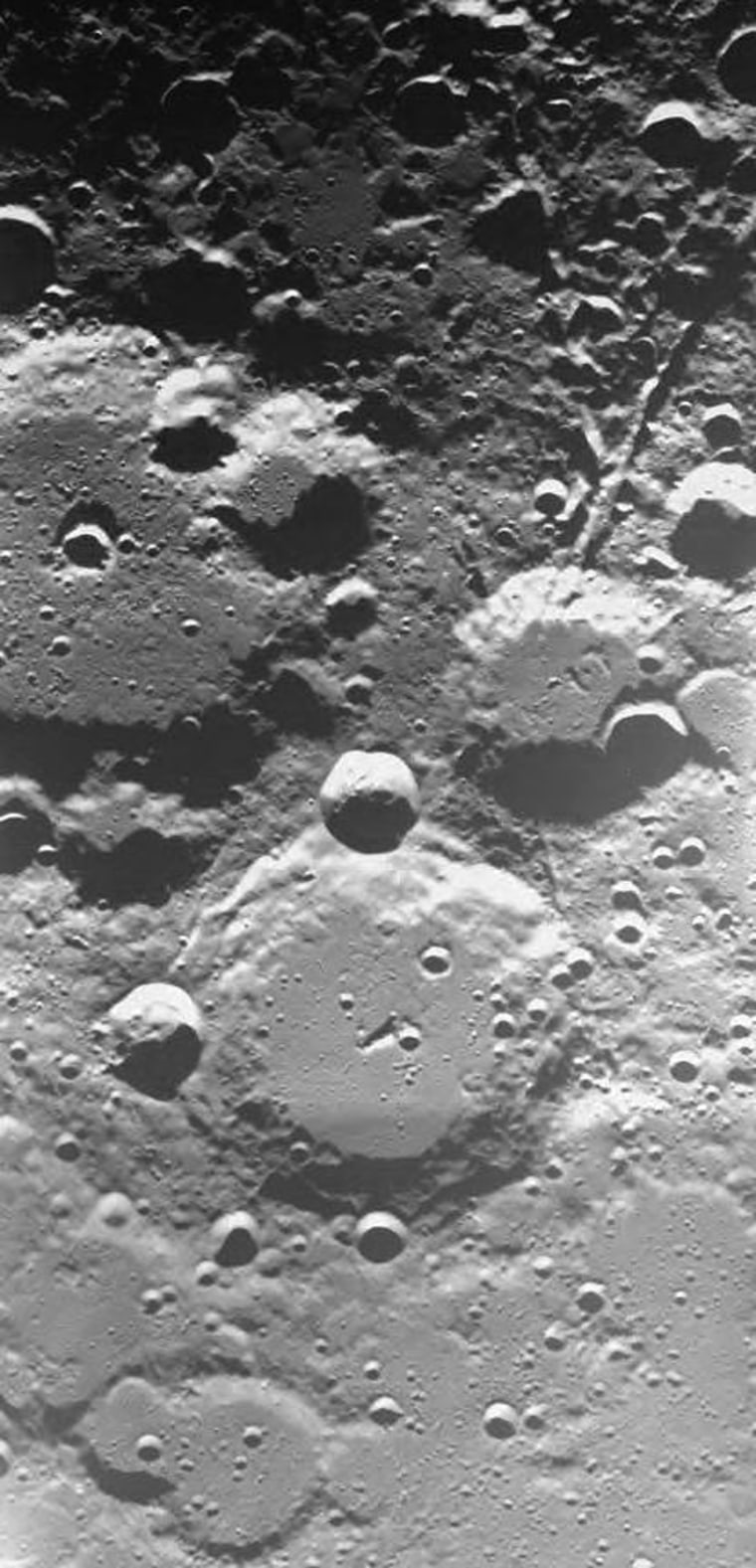The European Space Agency's SMART-1 spacecraft has sent back the first close-up pictures of the moon taken in more than five years.
The test observations show three views of ancient impact craters on the pockmarked lunar surface.
SMART-1, Europe's first moon mission, used a high-tech ion engine to gradually escape Earth's gravity after launch on Sept. 27, 2003. The slow-and-steady propulsion system makes for a cheaper mission compared to conventional rocketry. The craft spiraled outward for months, then entered a wide lunar orbit on Nov. 15 after the longest trip to the moon ever made. It has been circling closer and closer to the moon the past two months.
The ion engine was turned off around the end of the year so science observations could begin. Then the craft's Asteroid-Moon Imager Experiment device took the close-up images released Wednesday.
They were taken from between 620 and 3,100 miles (1,000 to 5,000 kilometers) above the moon.
One of the new images shows the good-sized impact craters Brianchon and Pascal, along with several smaller craters.
"This image was the first proof that the AMIE camera is still working well in lunar orbit," said AMIE Principal Investigator Jean-Luc Josset of Space-X.
SMART-1 will not land. But its observations are expected to increase understanding of the moon's composition. Success of the ion drive could lead to a similar mission to Mercury.
Among AMIE's tasks is to settle a longstanding debate over whether there are significant deposits of water ice at the lunar poles. Settling the question would inform any possible decisions about whether and where to send humans. SMART-1 will also map the moon in infrared, helping scientists better grasp the distribution of minerals and the whole evolution of the Earth-moon system.

Because the moon does not have an atmosphere, nor any significant underground activity such as volcanoes and earthquakes, its craters preserve a record of asteroid and comet impacts dating back billions of years. Earth experienced the same bombardment, and scientists are eager to learn more about the exact timing of major events and how they might have affected the development of life.
For the next two weeks, SMART-1 will make a medium-resolution survey of the moon. Later, high-resolution images taken from lower altitudes will be integrated into the medium-resolution global map.

"We are conducting more survey test observations until the electric propulsion resumes from Feb. 9 to spiral down further toward the moon," said project scientist Bernard Foing. "SMART-1 will arrive on Feb. 28 at the initial orbit with altitudes between 300 and 3,000 kilometers (186 and 1,860 miles) to perform the first phase of nominal science observations for five months."
The last craft to explore the moon was NASA's Lunar Prospector, which was crashed into the surface on purpose in 1999.
